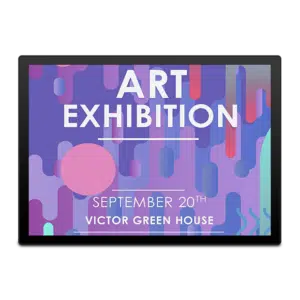Comparing Electronic Paper Displays with OLED and LED
Comparing Electronic Paper Displays with OLED and LED
Blog Article
Display technology is now an intrinsic part of our everyday lives, showing in sets from smartphones and e-readers to large-scale promotion panels. On the list of varied selection of E-ink screen display, OLED (Organic Light-Emitting Diodes), and LED (Light-Emitting Diodes) have emerged as some of the very most generally mentioned options. While every type serves its unique purpose, their differences in features, performance, and use cases make sure they are ideal for certain applications. Let's have a deeper consider the important traits of those display technologies.
Electronic Paper displays (ePaper)
Electronic Paper displays, also known as ePaper or Electronic Ink displays, are created to simulate the looks and readability of standard Ink on paper. This engineering employs little microcapsules comprising charged dark and bright contaminants suspended in a definite fluid. When a power area is applied, the particles go on to each side of the capsule, creating an obvious image. The picture remains static until yet another electrical subject is applied, which makes it perfect for presenting text-based material such as for instance publications, papers, and e-readers.

One of many major benefits of ePaper displays is their reduced power consumption. Unlike old-fashioned LCD
Understanding Electronic Paper displays
An electric Paper display (ePaper) mimics the looks of Ink on paper. Unlike old-fashioned displays, ePaper relies on its power to reflect ambient light rather than emitting their own. This technology not only reduces eye strain but additionally offers unparalleled readability in sunlight, which makes it well suited for e-readers and digital signage solutions.
One standout function of ePaper displays is their extremely minimal energy consumption. Because they simply use energy when adjusting content, ePaper monitors are highly successful and suitable for battery-powered devices. However, their renew charges are slower in comparison to OLED and LED displays, restraining their applicability to fixed or minimally energetic content.
OLED displays
OLED displays are noted for their spectacular aesthetic quality, giving vibrant colors, heavy blacks, and exceptional contrast. Each pixel within an OLED display produces its own light, eliminating the necessity for a backlight. This not just enables leaner, more light designs but also benefits in better energy effectiveness compared to LED in certain scenarios.
One crucial advantage of OLED displays is their flexibility. They could be manufactured in rounded or foldable designs, making them popular in cutting-edge smartphones and wearable devices. Nevertheless, OLED displays have difficulties, such as susceptibility to burn-in and shorter lifespans compared to different technologies.
LED displays
LED displays, the most frequent of the three, rely on a backlit program to mild their pixels. Without as creatively impressive as OLED E ink signage, LEDs are extremely durable, long-lasting, and cost-effective. These characteristics make sure they are suitable for a broader range of programs, including TVs, pc watches, and outside advertising.
LED displays usually perform effectively in terms of lighting, creating them a good choice for settings with large ambient light. Nevertheless, they flunk in achieving exactly the same serious contrast and color precision as OLED technology.

Final Contrast
When choosing between ePaper, OLED, and LED displays, the decision depends mainly on the supposed purpose. For static material like reading or signage, ePaper excels having its minimal power usage and large exposure in normal light. OLED shines in programs where vibrant colors and flexibility are paramount. Meanwhile, LED remains a dependable and cost-efficient alternative for a variety of general-purpose needs.
Each display engineering provides anything distinctive to the table, ensuring that there is an ideal selection for every situation. Understanding these variations might help customers and businesses make informed decisions that match their particular display requirements. Report this page